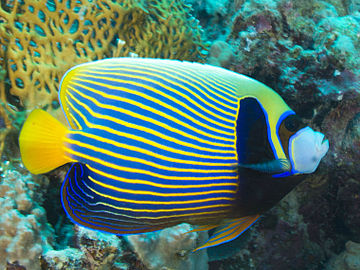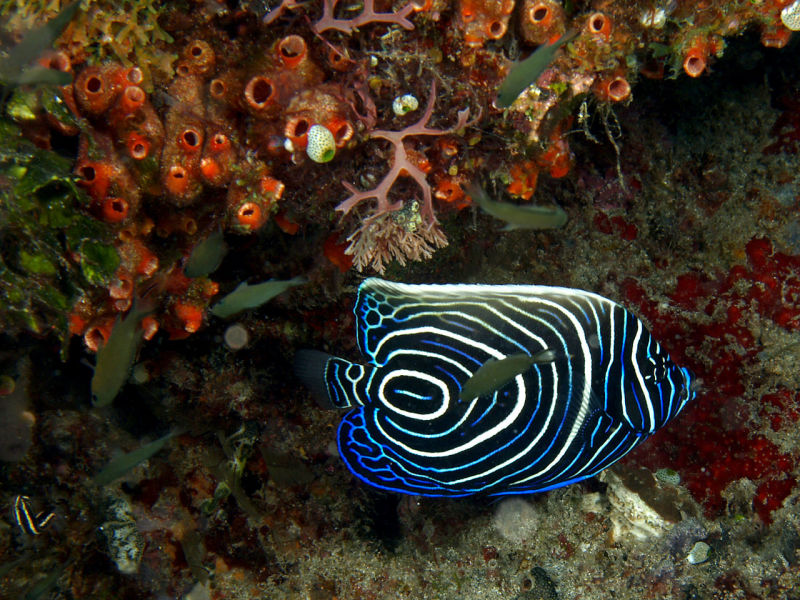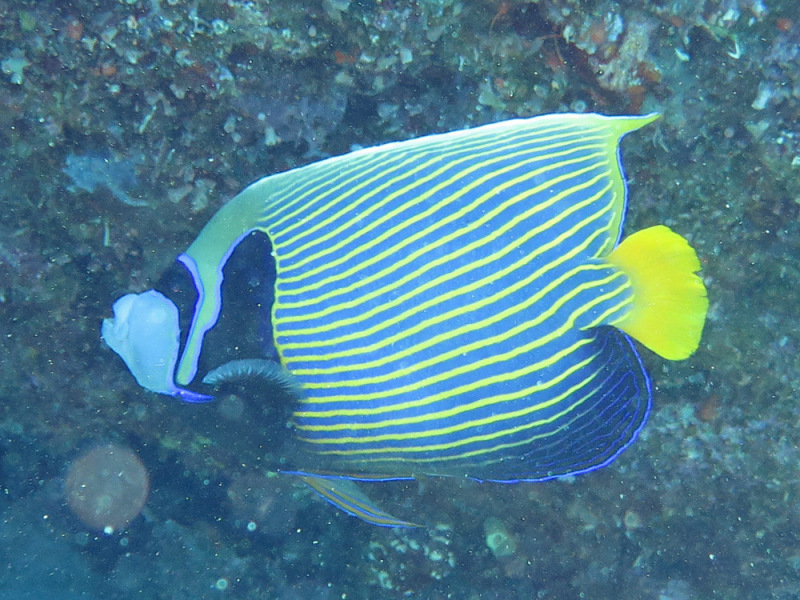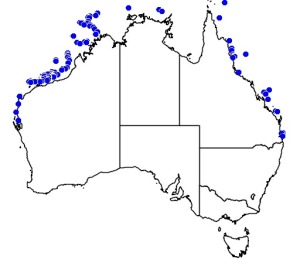Colours
Distinguishing features
Size
- Up to 40 cm (Standard Length)
Depth range
- From 1 m to 100 m
Synonyms
Distribution
Distribution and habitat preferences
It is native to the Indian and Pacific Oceans, from the Red Sea to Hawaii and the Austral Islands. It ranges from coastal East Africa and the Red Sea in the west, to the Tuamotu Islands and Line Islands. Rare sightings have been recorded in the Hawaiian Islands, Puerto Rico, and Florida. These appearances are most likely due to aquarium release. Some populations have been observed as far as southern Japan to the Great Barrier Reef in Australia, New Caledonia, and the Austral Islands.
Emperor angelfish dwell in reef-associated areas. Juveniles live alone and inhabit outer lagoon patch reefs or semi-protected exposed channels and reef flats. They tend to hang out at shrimp cleaning stations, feeding off parasites and dead skin of larger fish species. Subadults move to reef front holes and surge channels, while mature adults are found in caves in areas of rich coral growth on clear lagoon, seaward, or channel reefs.
Males are territorial and will defend their habitat as well as the females living with them. Adults are also known for making a low-frequency “knocking” sound if disturbed or threatened by divers. (Wikipedia)
Local abundance
- Lizard Island: Uncommon; seen more frequently at the outer reef.
Diet
They feed on sponges and other encrusting organisms and also on tunicates. (Fishbase)
Web resources
References
- Allen, G., R. Steene, P. Humann and N. Deloach (2003). Reef fish identification: Tropical Pacific New World Publications Inc., Jacksonville, FL, USA.



